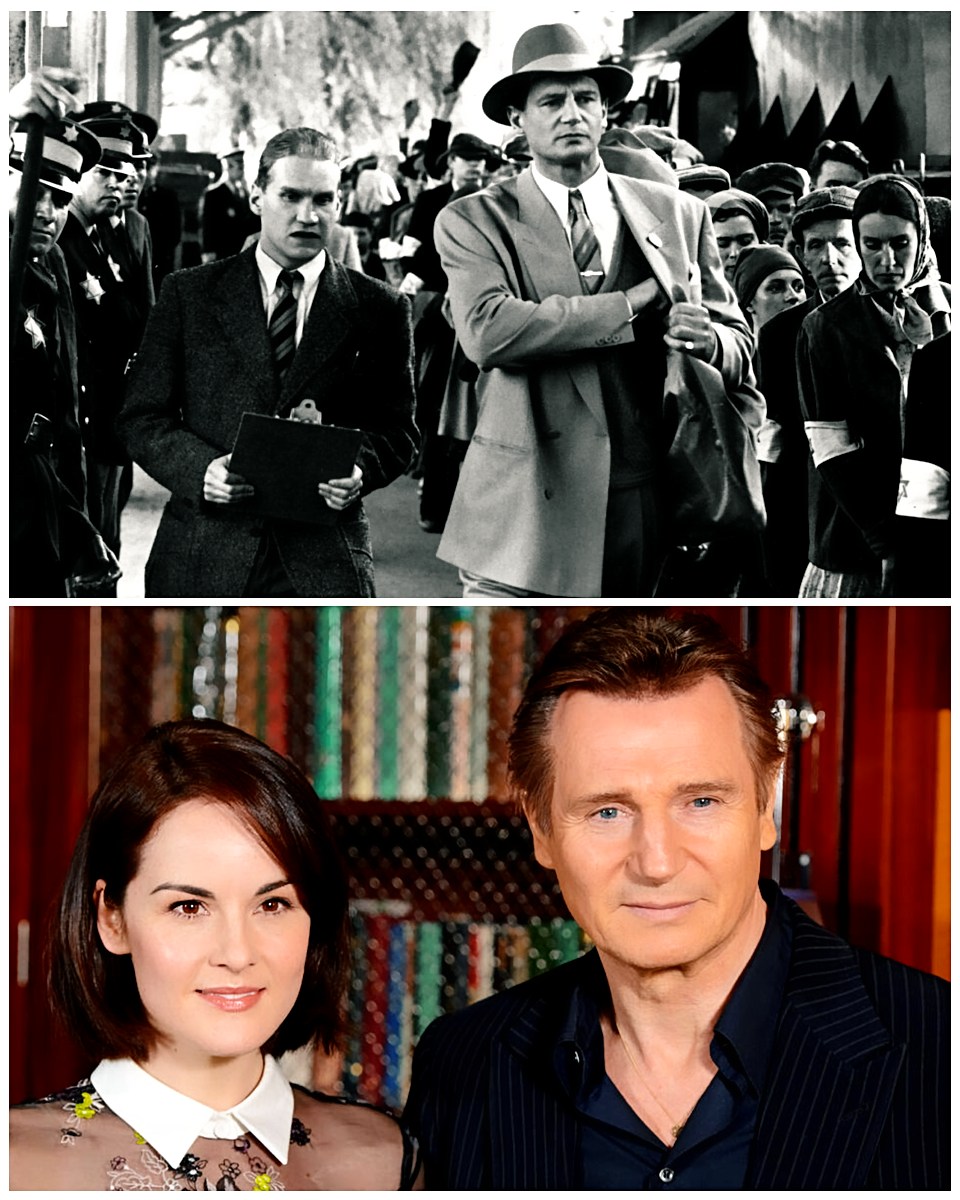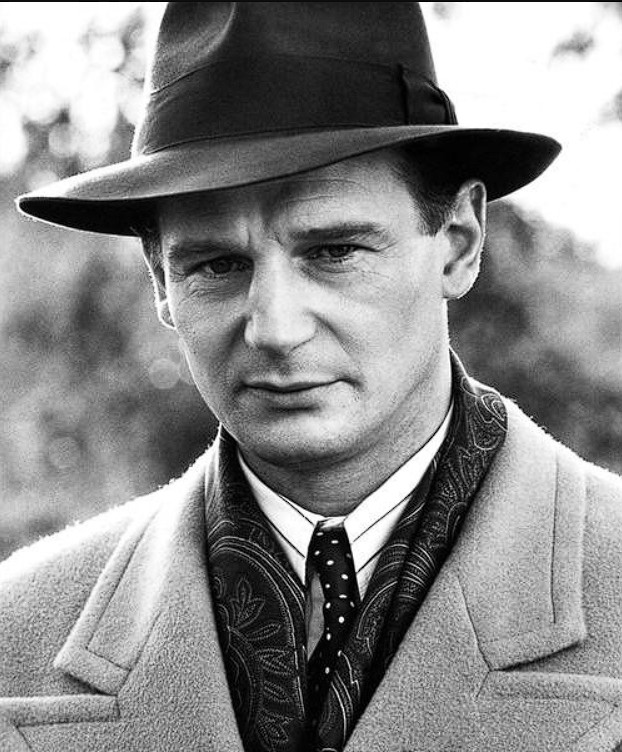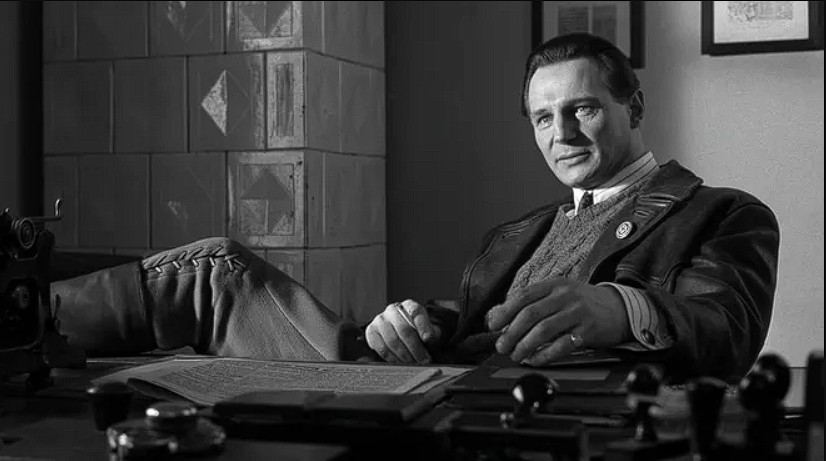Liam Neeson’s portrayal of Oskar Schindler in Steven Spielberg’s “Schindler’s List” (1993) transcends a mere performance; it’s a profound exploration of human transformation, etched in cinematic history with restraint and emotional depth. Initially an unexpected choice, Neeson’s nuanced portrayal brought Schindler’s complex journey to life, leaving an indelible mark on audiences worldwide.

The Genesis of a Masterpiece: From Audition to Icon
Liam Neeson’s path to embodying Oskar Schindler was not predetermined. His powerful audition, however, revealed the depth of his ability to portray the character’s intricate evolution.
An Unconventional Casting: Earning the Role
- Despite initial consideration of more established stars like Harrison Ford and Kevin Costner, Steven Spielberg ultimately recognized Liam Neeson’s unique ability to capture Schindler’s multifaceted nature.
- Neeson’s audition resonated with Spielberg, revealing a profound understanding of Schindler’s complex character arc, from opportunistic businessman to moral savior.
- This casting decision, though unconventional, proved to be a stroke of genius, allowing Neeson to deliver a performance that was both powerful and deeply human.
Schindler’s Transformation: A Journey of Moral Awakening

- Oskar Schindler’s journey, from a pragmatic profiteer to a reluctant hero who saved over 1,200 Jewish lives, is one of cinema’s most compelling character arcs.
- Neeson masterfully navigates this transformation, eschewing overt dramatics in favor of restraint and nuance, allowing the audience to witness Schindler’s gradual moral awakening.
- His towering presence and commanding voice initially establish Schindler as a charismatic manipulator, but as he witnesses the horrors of the Holocaust, Neeson subtly reveals a man grappling with his conscience.
Key Moments of Emotional Resonance: Capturing Schindler’s Humanity
Neeson’s performance is punctuated by moments of profound emotional resonance, each revealing a different facet of Schindler’s evolving humanity.
The Ghetto Liquidation: A Silent Witness to Horror
- During the liquidation of the Kraków ghetto, Schindler’s silent observation from a hilltop is a pivotal moment. Neeson’s gaze, lingering on the girl in the red coat, captures the character’s initial confrontation with the true horrors of the Holocaust.
- The stark contrast of the red coat against the black-and-white backdrop serves as a visual metaphor for Schindler’s moral reckoning, marking the beginning of his transformation.
- Neeson’s ability to convey Schindler’s silent horror and growing empathy through his eyes and expressions is a testament to his understated yet powerful acting.
The Desperate Plea: A Heartbreaking Confession

- Schindler’s anguished plea, “I could have done more,” is a moment of raw emotional vulnerability. Neeson’s portrayal of Schindler’s overwhelming guilt and regret is deeply moving.
- This scene captures the character’s profound transformation, from a man driven by self-interest to one consumed by remorse for his past inaction.
- Neeson’s ability to convey Schindler’s inner turmoil with such raw emotion is a testament to his exceptional acting ability.
An Enduring Legacy: Humanizing History
Liam Neeson’s performance in “Schindler’s List” transcends mere acting; it’s a profound exploration of humanity in the face of unimaginable horror.
Humanizing a Hero: Portraying Complexity

- Neeson’s nuanced portrayal humanizes Oskar Schindler, presenting him not as a saint, but as a flawed individual who ultimately chose to do the right thing.
- This complexity allows the audience to connect with Schindler’s journey on a deeper level, understanding the internal struggles and moral dilemmas he faced.
- Neeson’s ability to portray this complexity is a key factor in the film’s enduring impact.
A Lasting Impact: Remembering Schindler’s Legacy
- Through his understated yet deeply emotional portrayal, Neeson not only brought Schindler’s story to life but also ensured his legacy endures as a symbol of hope and resilience.
- His performance serves as a reminder of the power of individual action in the face of injustice.
- Neeson’s work contributes to the film’s enduring power, ensuring that Schindler’s story continues to resonate with audiences and inspire acts of compassion.
What made Liam Neeson’s performance so unforgettable was his ability to convey Schindler’s complex transformation with understated yet deeply emotional power. He allowed the audience to witness Schindler’s moral awakening, not through grand gestures, but through subtle shifts in expression and demeanor, creating a portrayal that was both powerful and profoundly human.

